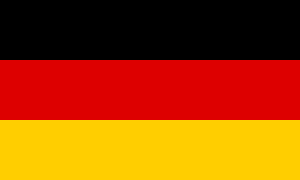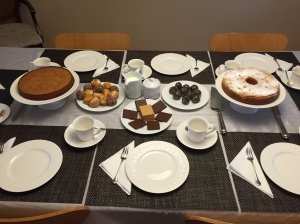German American Heritage Museum of the USA
The German American Heritage Museum of the USA, located in Washington D.C., celebrated their 5th year anniversary on Saturday, March 21st. I recently discovered this museum, and if your children are German speakers or German students, and of course if your heritage is German or you are raising world citizens you will likely make this museum a stop on your itinerary the next time you visit D.C. 
During the festivities on Saturday, children were entertained with live music, fun and games and snacks. Adults participated in events such as viewing the museum’s documentary, “100 Years of Hollywood” that celebrates the 100th anniversary of the opening of Universal Studios in Hollywood by German-American, Carl Laemmle. Click this link for a sampling of the schedule of events on March 21st.
Fun Ways to Teach Children the German Language and Culture
Although the German influence in the United States is not as prevalent, as let’s say the Irish and the Italian, it is quite easy and fun to highlight German themes to our budding world citizens. Fun, child-friendly, family events such as last weekend’s Märchen-Festival at NYC’s Galli Theater is another example of how children can participate in activities such as face painting, enchanted crafts and a “Mini-Theaterkurs” and learn about the German language and culture in a an authentic learning environment.
Other fun ways to teach global children about Germany include:
1. Telling your children fun trivia stories. I told my boys, early on, when they started wearing Adidas and Puma athletic wear, the story behind the German-born, innovative brothers Adi and Rudy Dasler. Adi named his company ADIDAS after his own nickname and last name (Adi Das). His brother, Rudolf, named his company RUDA, after his own name and last name (Ru Da) before changing it to PUMA. Also interesting, is that “puma” is the word for cougar in German, as well as other languages, such as Spanish, French, Russian, Romania, Portuguese, Italian, Polish, Czech, Swedish, Bulgarian, Danish, Norwegian, Serbian and Slovene. (according to Wikipedia)
2. Talking about German cars as you drive on the highway and the origin or meaning of the company names. German sports cars such as Porsche (a character on the Disney-PIXAR’s movie “Cars”) and German Formula-1 race drivers will always capture a boy’s attention.
3. If your child is familiar with classical music via the Disney Baby Einstein and Little Einstein series, or just because classical music is appreciated at home, then they will enjoy discovering that Beethoven, Bach, Brahms and many others were German.
4. Enjoying “Kaffe und Kuchen” with good friends and their children. This ritual also referred to as Kaffeeklatsch is still quite common in Germany on a Saturday or Sunday afternoon. Our very gracious, German-American friend likes to explain to her own children and guests the names of the German cakes and cookies she serves as well as play engaging word games and guessing games with the kids at the table for an authentic German experience.
5. Finding and highlighting some English words and expressions that are German or akin to German. (i.e. hound, rectangle, Gesundheit, kaput, Wiener, hamburger, and Fußball). Children find these relationships between words and languages “funny” which will help them remember vocabulary words and roots more easily.
Always remember to keep your language endeavor fun. What do you and your family do to keep your language plan fun?

